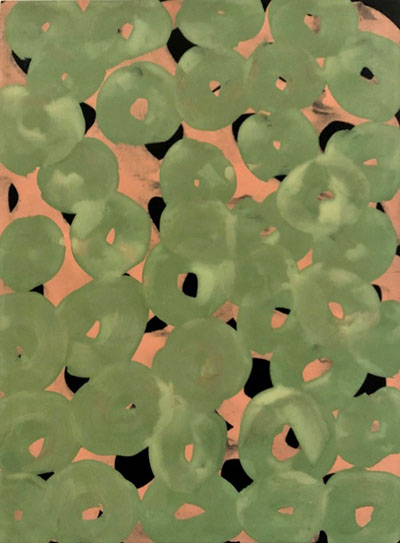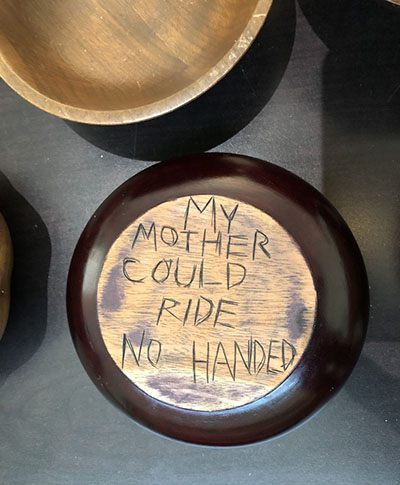

Misplaced Memory—One Art
My daughter was in Middle School when she brought home the poem "One Art" by Elizabeth Bishop. I wasn't familiar with Elizabeth Bishop or her poetry. The title captured my attention—which Art are we talking about?
The art of losing isn't hard to master;
so many things seem filled with the intent
to be lost that their loss is no disaster.
I wasn't expecting "losing" to be an art, but I could relate. Losing isn't hard to master—keys, glasses, cats. Things get lost or disappear or get misplaced every day and too much time is spent hunting for one thing or another.
"One Art" appeared in my life around the time that my father was dying. "The art of losing isn't hard to master" became my mantra. It helped me get through a difficult time.
My father was an artist and near the end of his life he could not see. Whenever we visited him, a lot of time was spent searching for something—his wallet, a drawing, a phone number. It was stressful for all of us, but not a disaster.
My art has always been nostalgic to some degree—a wistful yearning to return to some past period—imagined or real. I made one of my first collages when I was six. It was of a horse running to a water trough that was a pudding label. I won a camera for that collage on "The Friendly Fireman" TV show.
In art school I made collages mainly for my own amusement. After graduate school I made more collages because most people were not understanding my conceptual weaving pieces—woven rope, newspaper, tin foil. Cheeky collages with a dry sense of humor received better reception.
In 1994 I did a residency at Vermont Studio Center. It was a very cold January in Vermont. My intention was to spend two weeks making more collages, but my glue froze. I decided to do something I had never done before. I bought some dry pigment and some eggs and experimented with egg tempera.
My first paintings were still lifes and landscapes, but then I became more interested in the marks I was making when I was cleaning off my brushes at the end of the day. Like automatic writing, I was making paintings without consciously painting. That is how the "Misplaced Memory" pieces began. The marks and the colors would remind me of something:
Misplaced Memory—The Layers
Misplaced Memory—The Doughnuts
Misplaced Memory—The Buttons
This has been going on for years.
Misplaced Memory—Intersections
Misplaced Memory—Green River
Misplaced Memory—Rug
Misplaced Memory—Calm Down
. . . are more recent titles.
When Proust tasted his cookie dipped in tea, the madeleine transported him to his Aunt's room when he was a boy. The past arises unintentionally. Memories appear without being summoned.
Lately I've been noticing how certain things remind me of memories. For years the memory of a place from my past would appear when I was standing by the kitchen sink at work. I was in Houston, but for a moment I was in Massachusetts in the dining room where I had waited on tables in high school. It took me a while, but I finally realized it was the light—something about the light coming through the window.
Raspberries remind me of my Polish grandmother who didn't speak a word of English.
My misplaced memories are not as organized as some other artists. Joe Brainard's book, I Remember, is filled with memories of growing up during the '40s and '50s:
I remember birthday parties.
I remember creamed corn.
I remember Cream of Wheat lumps.
At Vermont Studio Center, I met Sarah Hutt. She started a week after I got there and stayed several weeks after I left. The Tanya Harding/Nancy Harrigan drama was going on. I remember discussing it with her in the dining hall.
After Vermont Studio Center, Sarah started her piece "My Mother's Legacy"—over 1000 wooden bowls with memories of her mother burned into the bottoms of the wooden bowls:
My mother wore pop beads.
My mother didn't allow gum chewing.
My mother never caught colds.
So back to "One Art"—losing, misplacing, remembering—they seem to all fit.
YouTube has many versions of Elizabeth Bishop's poem. One of my favorites is Tom O'Bedlam's version of the poem in a very distinguished gentleman's voice. Sophia Wilcott, a high school student from Canada, does a very dramatic reading. Abhijeet from India has a nice video with lovely graphics by Graciela Hernandez. There are many more. I recently found a sock puppet version by Claude the Reciter while I was looking for a video done by a child that I remember watching years ago. I've lost that version it seems. It's not a disaster.
Kathleen Packlick lives and works in Houston, Texas.

